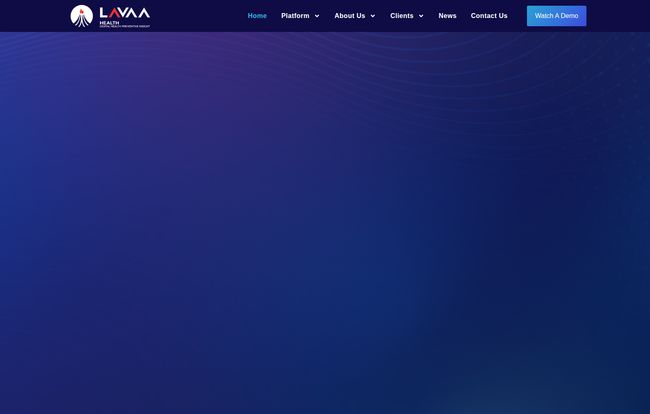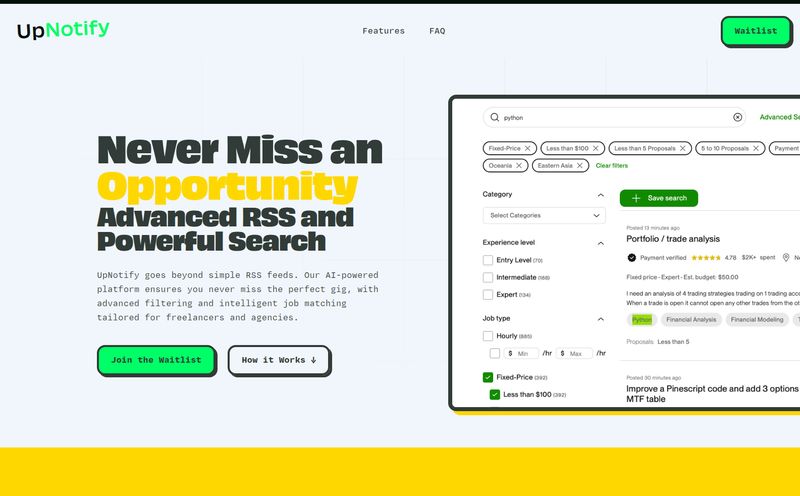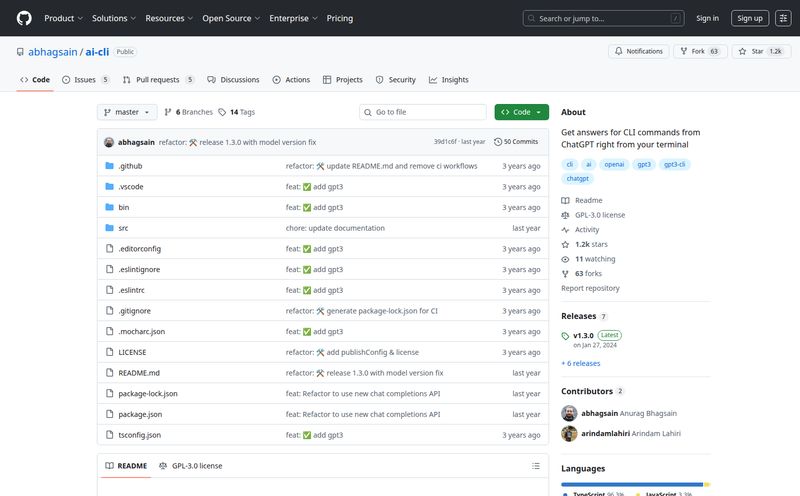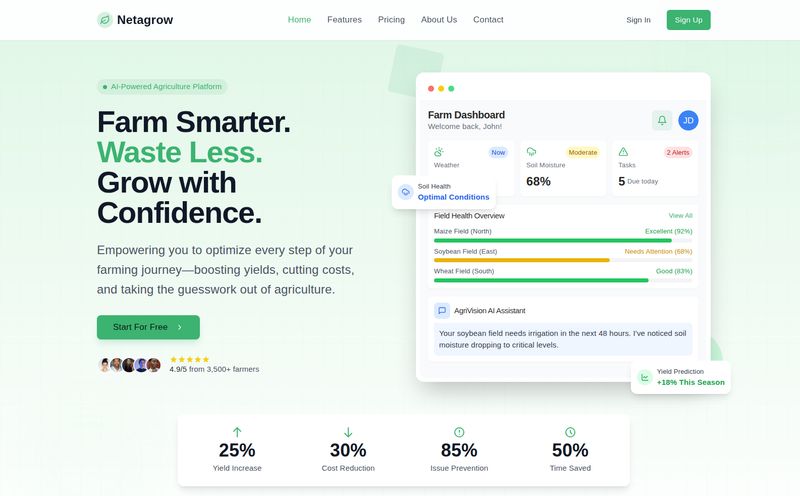Every week, I swear, a new platform lands in my inbox promising to “revolutionize” healthcare with AI. It’s the go-to buzzword, right? Slap some AI on a problem and, poof, it's solved. Most of the time, I'm skeptical. I’ve seen too many slick dashboards that are all sizzle and no steak. But every now and then, something catches my eye that makes me lean in a little closer. Today, that something is Lavaa Health.
The name itself is interesting. But the promise is what really got me. They’re not just talking about making things a bit more efficient. They're aiming squarely at the white whale of modern healthcare: making value-based care actually work. For those not deep in the healthcare weeds, value-based care is the shift from paying doctors for the quantity of services they provide (the old fee-for-service model) to paying them for the quality of the outcomes. It’s a great idea on paper, but in practice? It’s a logistical nightmare of data, risk, and coordination. So, does Lavaa Health have a real answer, or is it just more of the same AI hype? I decided to dig in.
What on Earth is Lavaa Health?
So what is this thing? At its core, Lavaa Health is an intelligence layer that sits on top of a hospital's or clinic's existing systems. Think of it less as a replacement for your EMR and more like a super-smart consultant who’s constantly reading all your patient data, 24/7. This consultant doesn't just read charts; it connects dots you didn't even know were there. It uses AI to flag patients who are at high risk for a serious event, like a hospital readmission, before it happens. It's all about moving from reactive sick-care to proactive healthcare.
They’re trying to unify all the scattered bits of information—from lab results in the EMR to clinician’s notes—to create a single, coherent picture. This isn't just for one patient, but for your entire patient population. The goal is to give care teams the insights they need to intervene early, personalize treatment, and stop small problems from becoming catastrophic, high-cost ones.

Visit Lavaa Health
The Core Features That Actually Matter
A platform is only as good as its tools. Lavaa Health has a few key features that seem to be the engine behind their whole operation. Let's break down the ones that I think are most significant.
The AI-Powered Crystal Ball
This is the main event. Lavaa’s platform is built on AI-powered analytics and real-time risk assessments. It’s not just looking at a single high blood pressure reading. It's analyzing thousands of data points—historical trends, medication adherence, social determinants of health—to build a predictive model. It might flag a patient whose vitals are technically “normal” but whose patterns suggest a coming decline. This is the difference between seeing a problem and anticipating one. For a care manager juggling hundreds of patients, that kind of heads-up is gold.
Taming the EMR Beast
Anyone who has worked in Health IT knows the four-letter word of the industry is E-M-R. Getting these systems to talk to each other, let alone a new platform, can be a soul-crushing experience. Lavaa Health claims to offer seamless EMR integration. Now, “seamless” is a word I'm always wary of, but the fact that they built their platform with this as a foundational piece is a very good sign. It's not an afterthought. The entire system is designed to pull data from and work within the existing EMR workflow, which is critical for adoption. If doctors have to log into yet another system, they just wont do it.
No More One-Size-Fits-All Care
The platform also generates personalized care pathways. This is a huge deal. Instead of following a generic protocol for “diabetic patients,” the system can suggest a pathway tailored to a specific person’s risk factors, comorbidities, and even their likely engagement level. This helps care teams focus their limited time and resources where they’ll have the most impact, guiding them on who to call first and what to talk about.
Your Mission Control for Patient Care
Finally, it all comes together in a care coordination dashboard with an integrated alerting engine. This is mission control. It’s where managers can see population-level risk, where nurses get alerts about specific patients, and where the whole team can see who is doing what. It prevents things from falling through the cracks, like a missed follow-up call that leads to a preventable ER visit. It’s about making sure the right hand knows what the left hand is doing, which is shockingly difficult in a fragmented health system.
The Good, The Bad, and The “It Depends”
No platform is perfect, and from my experience, the shiny demo doesn't always match the day-to-day reality. Here’s my breakdown of the pros and cons as I see them.
On the plus side, the potential benefits are massive. We're talking about tangible improvements in both patient health and the hospital's bottom line. The ability to reduce preventable hospitalizations, streamline workflows, and boost your performance in value-based contracts (which means better CMS reimbursements) is a powerful combination. It’s a win for the patient, a win for the provider, and a win for the payer. In theory, everybody's happy.
| The Upside | The Potential Hurdles |
|---|---|
| Improves care quality and financial outcomes. | Effectiveness is tied to data quality (Garbage In, Garbage Out). |
| Reduces costly hospitalizations. | Requires EMR integration, which can be a project in itself. |
| Provides real-time, actionable insights. | Teams will likely need some training to use it optimally. |
| Automates workflows and improves team productivity. | Cultural shift to proactive care can be challenging. |
But let's be real. The biggest hurdle, in my opinion, is the classic “Garbage In, Garbage Out” problem. The AI is only as smart as the data it's fed. If your EMR data is a mess of incomplete fields, non-standard entries, and missing information, Lavaa’s predictions will suffer. It’s not their fault, but it's a reality any organization has to face before implementation. You have to have your data house in order.
Also, the fact that it requires EMR integration is both a pro and a con. It’s great that it's designed that way, but it also means there’s an implementation project ahead. And while they say it's smooth, any veteran of hospital IT will tell you there’s no such thing as a truly “painless” integration. Finally, there's the human element. You can have the best dashboard in the world, but your teams need to be trained and willing to adopt a more proactive, data-informed workflow. That's a cultural shift as much as a technological one.
Who Is This Really For?
Based on their own materials and just the logic of the platform, Lavaa Health is clearly targeting organizations that have skin in the game when it comes to patient outcomes. This includes:
- Hospitals and Health Systems: Especially those in Accountable Care Organizations (ACOs) or other value-based contracts where they are financially responsible for patient outcomes and reducing total cost of care.
- Clinics and Provider Groups: Groups looking to manage their patient panels more effectively and improve their quality scores.
- Payers and Insurers: Who have a very direct financial incentive to keep their members healthy and out of the hospital.
- Nursing and Eldercare Facilities: Where preventing falls and hospital transfers is a massive operational and clinical priority.
Basically, if your organization's financial health is tied to the actual health of your patients, a platform like this is built for you.
Let's Talk About The Price Tag
Ah, the million-dollar question. Or is it? You won’t find a pricing page on the Lavaa Health website, and that’s not surprising. For enterprise-level, B2B platforms in a regulated field like healthcare, pricing is almost never one-size-fits-all. The cost will depend on the size of your organization, the number of patients, the complexity of your EMR integration, and the specific modules you need.
To get a number, you’ll have to do what the big button on their site says: “Watch a Demo.” This is standard procedure. They want to understand your needs before they throw a number at you. So, if you're serious, that’s your next step.
Frequently Asked Questions about Lavaa Health
- 1. What is value-based care and how does Lavaa Health help?
- Value-based care is a healthcare model that rewards providers for good patient outcomes, not just for the number of procedures they do. Lavaa Health helps by using AI to identify at-risk patients early, allowing providers to intervene proactively, prevent costly events like hospitalizations, and improve the overall quality scores that determine their reimbursement.
- 2. Is Lavaa Health difficult to integrate with our current EMR system?
- They claim the integration is seamless, but any EMR integration is a significant IT project. The platform is designed to work with existing EMRs, which is a major advantage over systems that require you to replace what you have. The complexity would depend on your specific EMR and the state of your data.
- 3. How does the AI actually predict patient risk?
- The AI analyzes vast amounts of data from the EMR—labs, notes, medications, demographics, history—to find subtle patterns that precede negative health events. It's not just one factor, but the combination of hundreds of them, that allows it to generate a risk score and alert the care team.
- 4. Do we need a team of data scientists to use this platform?
- No, and that's the point. The platform is designed to do the heavy lifting of data science behind the scenes. It presents the results as simple, actionable insights, alerts, and dashboards for clinicians and care managers who are not data experts.
- 5. What kind of data quality is needed for Lavaa Health to work well?
- Better data leads to better predictions. While the platform can likely handle some imperfections, its effectiveness is directly tied to the quality and completeness of your EMR data. An organization with clean, standardized data will see the best results.
- 6. How does this improve our financial performance or CMS scores?
- By helping prevent high-cost events (like ER visits and readmissions) and improving key quality metrics (like medication adherence), the platform directly impacts the measures used in value-based contracts and by CMS. Better scores and lower costs lead to higher reimbursements and shared savings.
My Final Two Cents
So, back to my original question: Is Lavaa Health just more AI hype? I’m leaning towards no. Look, it’s not a magic wand. It won't fix a broken organizational culture or clean up a decade of messy data. But it seems to be a thoughtfully designed tool that addresses a very real, very expensive problem in healthcare.
The focus on proactive prevention, seamless (or at least, intentional) EMR integration, and clear care coordination puts it a step above many of the generic “AI solutions” I’ve seen. It’s a tool for organizations that are already serious about making value-based care work and just need better intelligence to execute. If that’s you, then yeah, I think getting a demo is probably worth your time. It might just be the smart consultant your team has been missing.
Reference and Sources
- Lavaa Health Official Website: https://www.lavaahealth.com/
- What Are Value-Based Programs? - Centers for Medicare & Medicaid Services (CMS): www.cms.gov
- The Challenge of EMR-to-EMR Integration - HealthIT.gov: www.healthit.gov/interoperability



